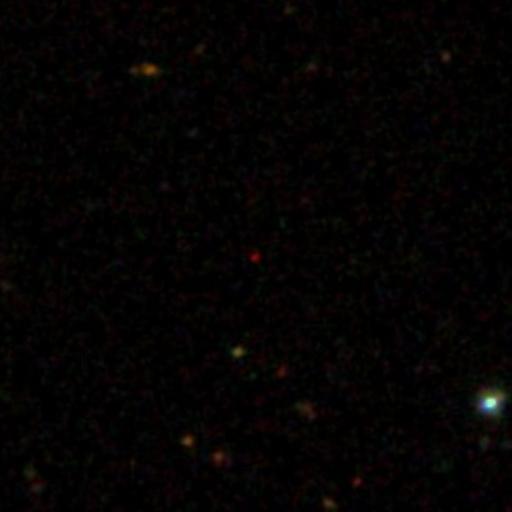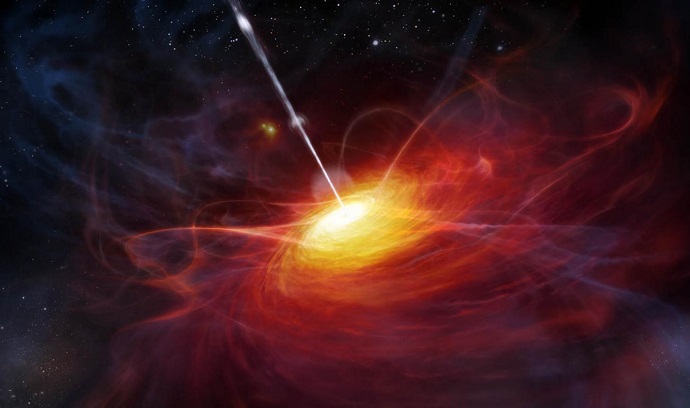26 FEBRUARY 2015
An international team of astronomers has found a huge and ancient black hole which was powering the brightest object early in the universe.
The black hole’s mass is 12 billion times that of the Sun, and was at the centre of a quasar that pumped out a million billion times the energy of our Sun.
Team member Dr Fuyan Bian, from the Research School of Astronomy and Astrophysics at the Australian National University (ANU), said the discovery challenges theories of how black holes form and grow in the early universe.
“Forming such a large black hole so quickly is hard to interpret with current theories,” he said.
A quasar is an extremely bright cloud of material in the process of being sucked into a black hole. As the material accelerates towards the black hole it heats up, emitting an extraordinary amount of light which actually pushes away material falling behind it.
This process, known as radiation pressure, is thought to limit the growth rate of black holes, Dr Bian said.
“However this black hole at the centre of the quasar gained enormous mass in a short period of time,” Dr Bian said.

At nearly 13 billion light years distance the ultrabright quasar appears as a tiny red dot in the cente of the image. Credit Sloan Digital Sky Survey
The team, led by Xue-Bing Wu at Peking University, China, selected the quasar from the Sloan Digital Sky Survey of over 500 million objects in the northern skies, because of its distinctive red colour. They then followed up with three other telescopes to study the object in detail.
Dr Bian expects more surprising objects will be discovered during the Skymapper survey of the southern skies, currently being run by the ANU.
“Skymapper will find more of these exciting objects. Because they are so luminous we can see further back in time and can use them to explore the early universe,” Dr Bian said.
The research is published in Nature.















